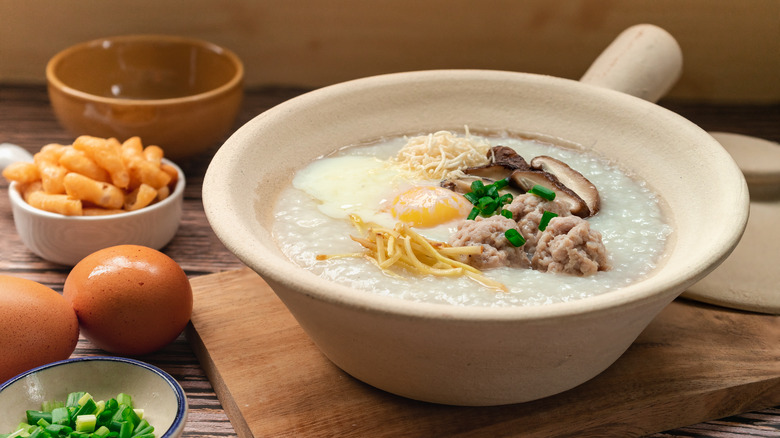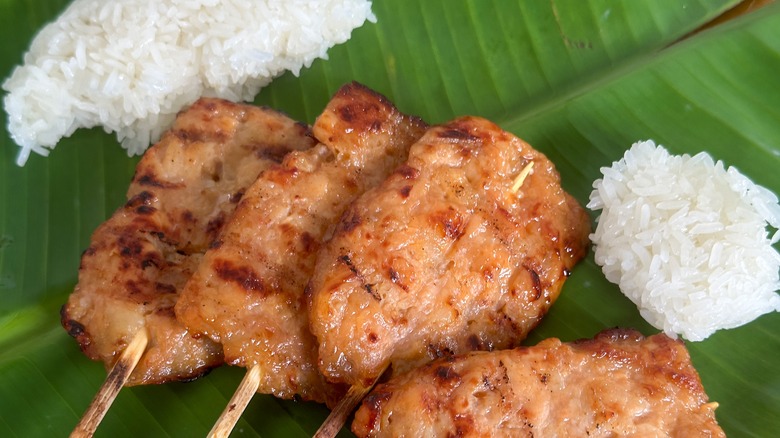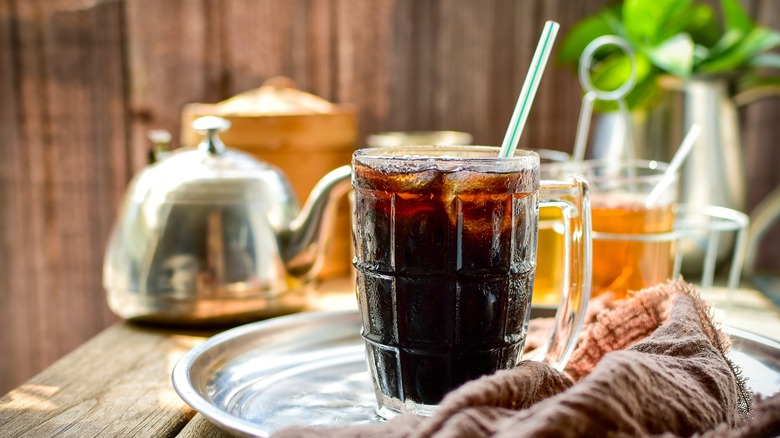Here's What You'll Eat For A Traditional Breakfast In Thailand
Though Thailand is roughly 19 times tinier than the United States, it's still made up of many regions and people, so what constitutes as a traditional Thai breakfast is debatable. However, there is a general consensus that, unlike some parts of the world, Thai culture doesn't group specific foods into the breakfast, lunch, or dinner categories. Eating a given dish does not depend on where the sun is in the sky; in short, your breakfast meal might be someone else's nighttime nom. But, it's not uncommon for some people to go for a lighter-flavored, smaller-portioned meal for breakfast and eat more than once before lunchtime.
Despite the absence of a clear delegation of foods, there has been an uptick in ready-to-eat cereal on the breakfast table in recent years due to various influences. Still, the more common components of a traditional aahan chow (Thai for "morning food") are the usual Thai ingredients of rice, pork, chicken, and noodles — basically, whatever's being sold on the street or sitting as leftovers in the fridge.
Rice for breakfast in Thailand
Sticky rice, wet rice, plain rice — you name it, Thailand has it, including for breakfast. Sticky rice is often served in little plastic baggies with grilled, marinated meat like skewered pork (moo ping) or chicken (gai yang) and sold at street food vendors. Another popular sticky rice combo is khao neow sang kaya, a sweet morning treat of custard atop black or white sticky rice doused in coconut cream and wrapped in banana leaves.
Moving onto plain white rice — it can be eaten with Thai omelets (khai jiao). However, don't expect pepper, salt, and milk in the eggs — Thai omelets are deep-fried and tend to have a dash of fish sauce, chilis, and spring onions. For a little more flavor, locals sometimes eat steamed white rice with curry — a dish known as khao red gaeng — with the option of a fried egg on top. Food stalls will generally start setting up shop shortly before sunrise for those craving it.
People in Thailand also eat congee (jok), made of boiling down rice in water. The porridge can be eaten plain or with toppings like Thai donuts (patongo) — salted, deep-fried dough with a crispy exterior and soft interior, perfect for dipping into congee. Patongo can also be enjoyed with coffee or sweet custard. Like congee, khao tom is another breakfast dish that's rice in liquid, though the rice is not as cooked down, and the broth is like soup. It's commonly enjoyed with seafood, fish, or vegetables.
Thai-style breakfast beverages
Aside from rice-based dishes, breakfast can comprise of instant noodles, dim sum, fried bread, steamed buns, and buttered bread. But for a well-rounded breakfast in Thailand, the beverages are just as important.
Tea and coffee, much like other parts of the world, are fan-favorites when it comes to breakfast drinks in Thailand. In fact, most Thai breakfasts will be served with hot coffee, but you'll see locals carrying around plastic bags of oliang — Thai iced coffee with condensed milk and evaporated milk — in the morning as well. While there are coffee shops in most areas of Thailand, there are also coffee carts selling hundreds every morning, anytime from 4 a.m. to 10 a.m.
Nam tao hoo, which is fresh soy milk often found at street food carts, is also a common sight for breakfast ... and really, any time of the day. They're typically sold in small plastic bags and include a sprinkling of sugar, basil seeds, or jelly pieces, depending on personal preference. Thought to be a source of energy, people in Thailand sometimes enjoy hot soy milk.


